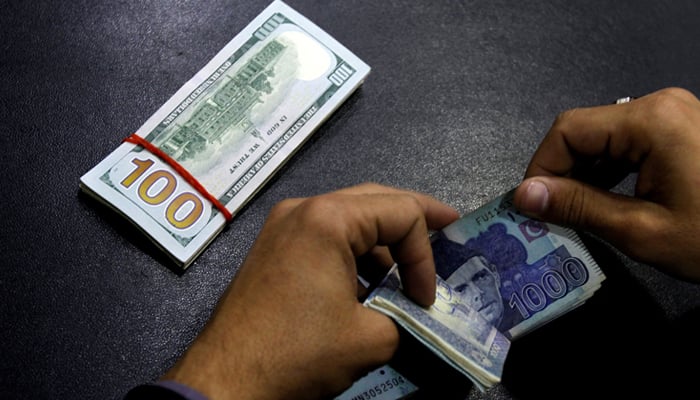The Pakistani rupee lost over Rs14, or 5%, against the US dollar in the outgoing week as the cash-strapped economy spirals deeper into a financial crisis amid challenges like looming debt default, shortage of dollars, unsustainable spending, uncontrolled inflation, and nine-year low foreign reserves.
Earlier during the week, the local unit advanced from a record low as the International Monetary Fund (IMF) team began negotiations with Pakistan over the resumption of its $6.5 billion bailout programme; however, Prime Minister Shehbaz Sharif’s rather concerning comments regarding the ongoing parleys sent the currency market reeling.
The PM on Friday said the Fund review mission was giving Finance Minister Ishaq Dar and his team a “very tough time” in the talks — expected to conclude on February 9.
Following his comments, the market panicked and the rupee devalued by 1.89% (or Rs5.22) to a new all-time low of Rs276.58 against the US dollar on Friday compared to Thursday’s close of Rs271.38.
Cumulatively, the rupee slumped 3.14% (or Rs8.69) in three days, compared to Wednesday’s close of Rs267.89 — the rupee recovered as crucial talks with the Washington-based lender resumed.
Tresmark, in its weekly currency commentary, noted that the rupee fell sharply last week from 264 per dollar to 278.50.
“It seemed to have stabilised around the 270 level, until the prime minister and finance minister spoke out,” the financial terminal for real-time market rates, news, charts, financial data, and technical analysis stated.
It added that when PM Shehbaz said that the IMF was imposing harsh conditions and when the finance czar said they were looking for philanthropists for billions of dollars, “traders assumed that the leadership was still looking for avenues other than IMF or that they would waste more time in negotiating with them.”
“However, in our assessment, the premier may have been only trying to prepare other stakeholders and vote base for harsh steps and measures,” Tresmark said, adding that another important factor behind the rupee’s downfall was the steep decline in total reserves of the country which are now at $8.7 billion (down by $712 million).
PM Shehbaz is battling to keep the economy afloat amid dollar shortages, and political tensions deepen.
Pakistan — with a $350 billion economy — is seeking a crucial instalment of $1.1 billion from the lender of the last resort to avoid default.
Tresmark mentioned that until and unless traders don’t feel confident about things getting better, especially the situation of reserves, the rupee would continue to fall, irrespective of its level.
“Traders we spoke to think the first and second level of resistance of 280 per dollar and 285 per dollar will be breached in the coming week unless the IMF comes on board. They also feel that 270-275 per dollar is the fair level post-IMF agreement, and any outruns will be temporary and will get corrected once there is some visibility of inflow,” the commentary read.

 Entertainment2 days ago
Entertainment2 days ago
 Latest News1 day ago
Latest News1 day ago
 Latest News1 day ago
Latest News1 day ago
 Latest News1 day ago
Latest News1 day ago
 Latest News1 day ago
Latest News1 day ago
 Entertainment2 days ago
Entertainment2 days ago
 Latest News1 day ago
Latest News1 day ago
 Latest News1 day ago
Latest News1 day ago
























